All Posts > Fruit Trees > Perennials > Plant Profiles
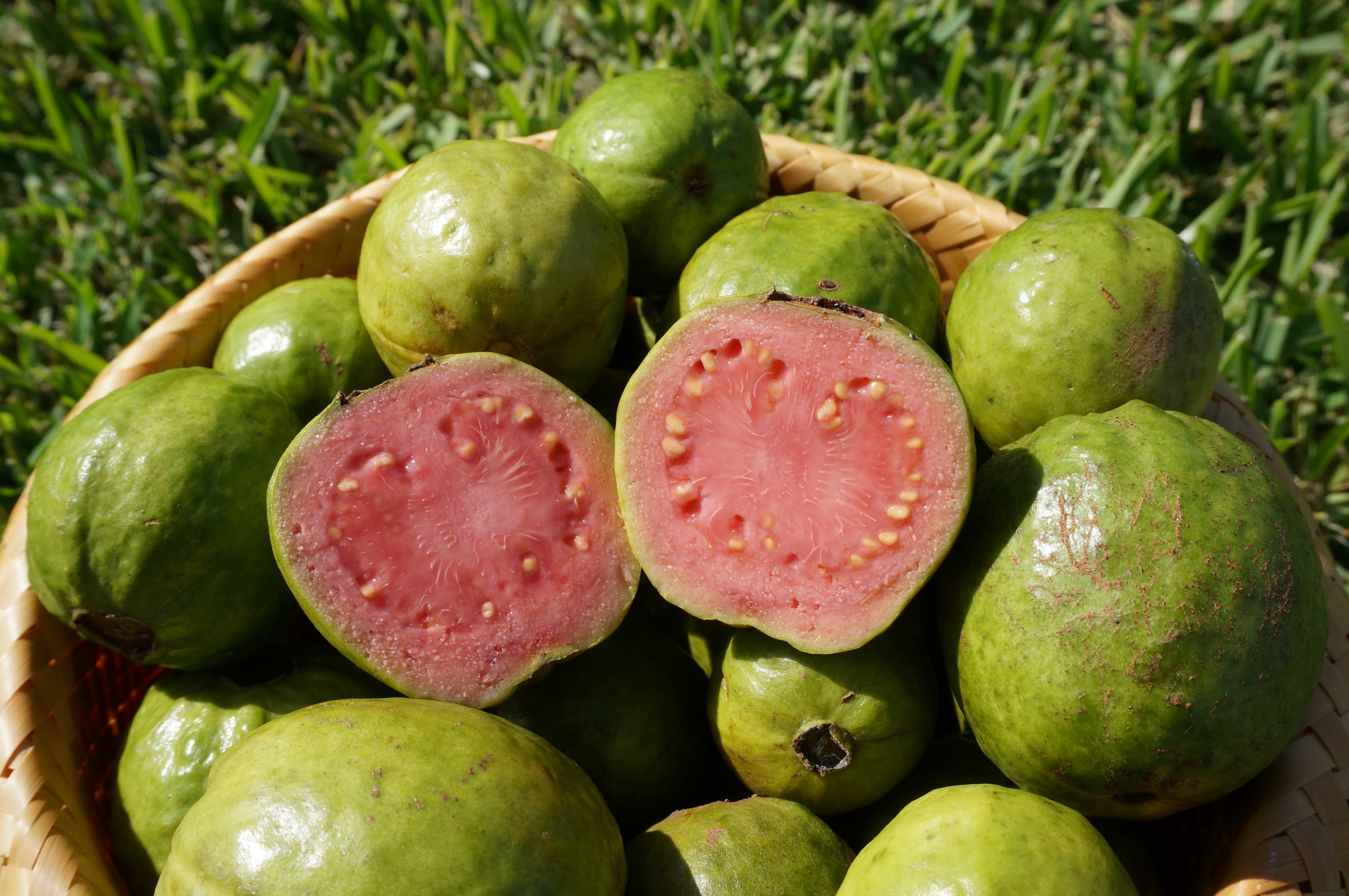
Introducing the Guava
The guava is a tropical fruit that has green skin, and either pink or white flesh. The pink flesh guavas are overall preferred because of their vibrant color. It is grown all over the world in tropical and subtropical regions. Since it has been cultivated for so long and can be found growing wild in many places, it is difficult to determine where it is originally from; however, it is thought to be native to Central America. It belongs to the Myrtaceae family, which is more commonly known as the myrtle family. In other languages the name for the fruit is pronounced and spelled very similar to the English version. In Spanish it is called guayaba.
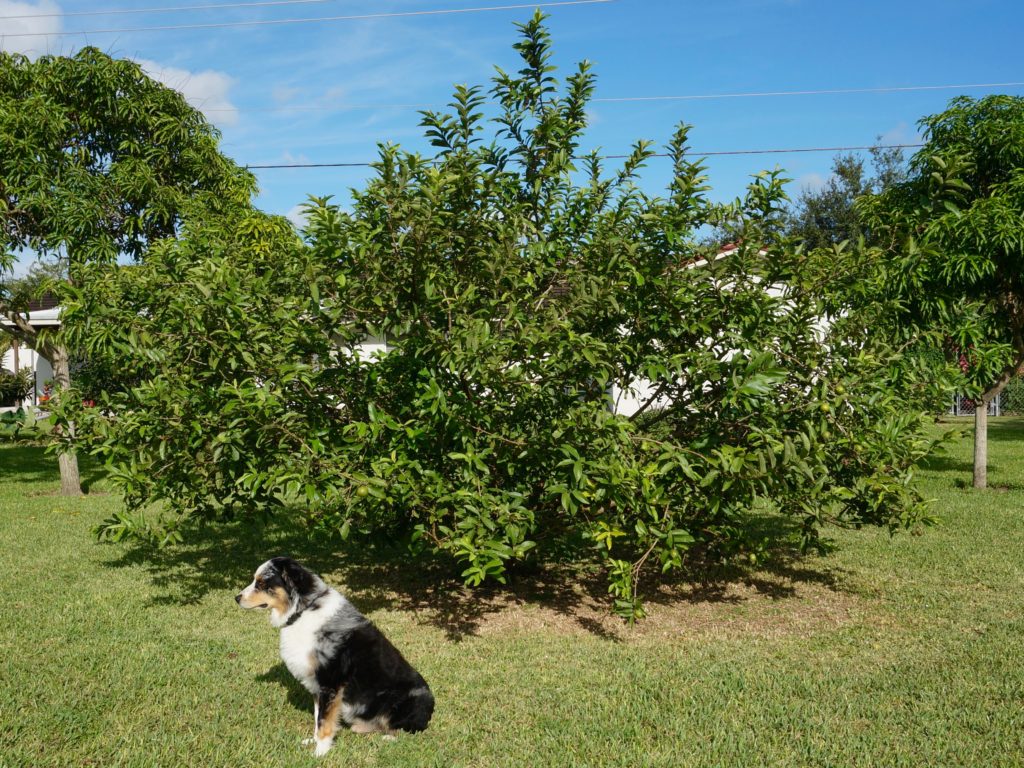
Growth Habit of Tree
Guava trees can grow up 30 to 40 feet tall if left unpruned; however, trees are best kept shorter for easy harvesting. This evergreen tree looks like a bush, but it can be shaped to grow like a traditional tree with a central trunk. It grows multiple branches at the very base, that all spread out and give it a very round shape. The branches are flexible making it easy to pull them down in order to harvest the fruit. The tree does well in both hot and humid climates, but it does not withstand cold temperatures very well. It does well in many different types of soil making it overall easy to grow. Due to its hardiness and young fruiting age I would recommend it to anyone that wants to grow a fruit tree in a container.
The white flowers are primarily pollinated by bees and grow alone or in clusters. They have 4 or 5 petals with a prominent tuft in the center.
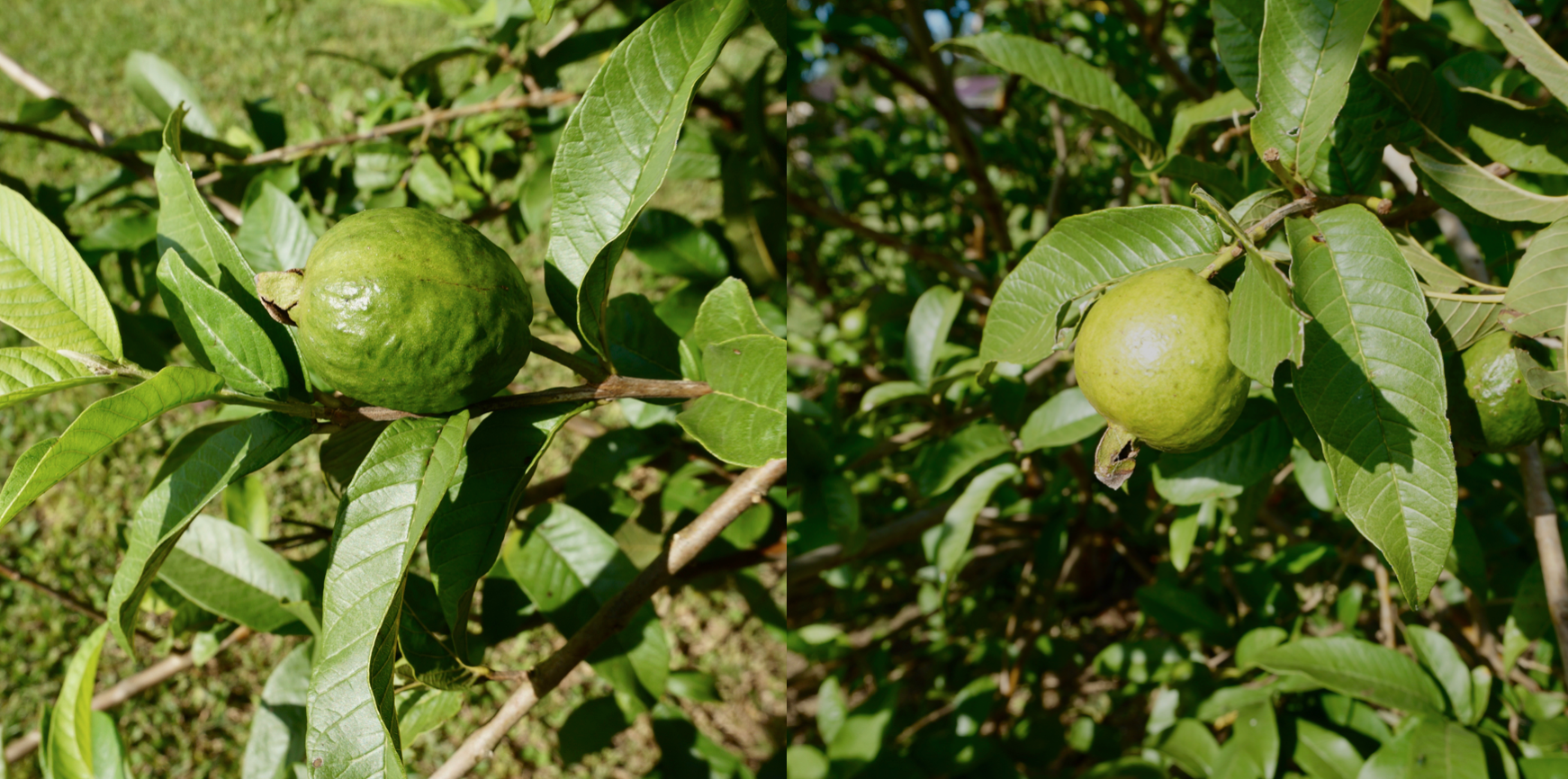
On the left is an underripe guava, and on the right is a ripe one. The underripe ripe guava has rough dark green skin, while the ripe one has smooth light green skin.
Growth Habit of Fruit
Guavas tend to be 2 to 4 inches long, with white ones generally being larger than pink ones. The trees are really abundant producers, so it doesn’t hurt to thin the fruit; it will also allow for the remaining fruit to grow larger. It fruits twice during the year, once in the summer and once in the winter. The young fruit has a rough dark green skin. As it matures the skin becomes smoother, and turns light green or yellow. The outer flesh surrounds the inner pulp that contains many small and hard seeds. There are easily 100 seeds in one guava, which is why this tree can be seen growing wild in many places. Once the fruit is ripe it is sweet and fragrant. Overall the pink guavas are more fragrant than the white ones.
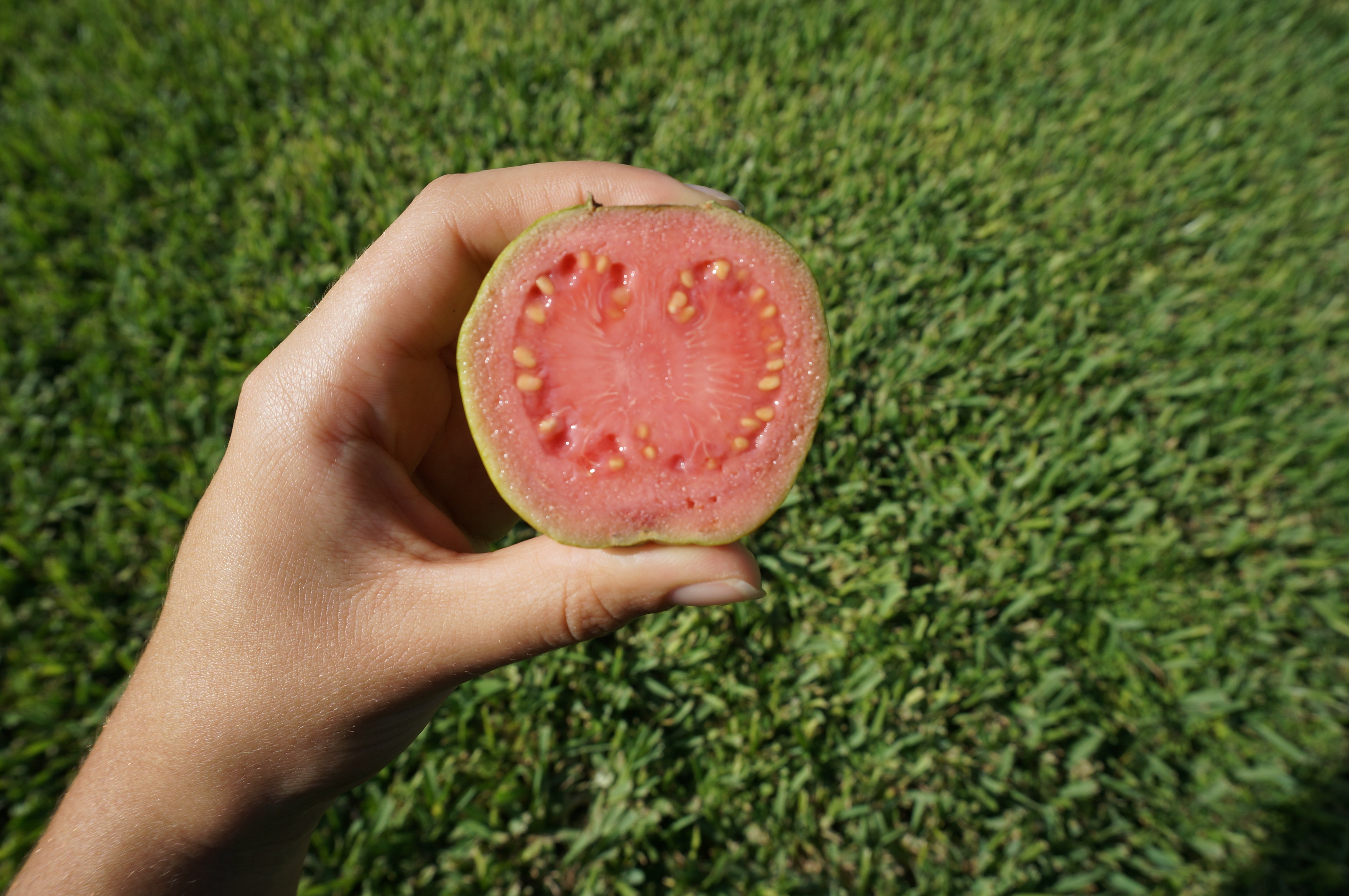
The center has pulp full of seeds. The defined outer ring of flesh does not have seeds.
Propagation
Guavas are easily grown from the seeds, that can remain viable for a couple months. You can purchase seeds here. Seed grown trees will start fruiting at only 2 to 4 years old! This is great news since you can plant seeds and harvest fruit relatively quickly. The trees aren’t true to seed but chances are that the resulting fruit will still be delicious. Other methods of propagation include root cuttings, air layering, semi-hardwood cuttings, and grafting. Since guava trees grow so easily from seed these methods are normally practiced only when a certain cultivar is desired.
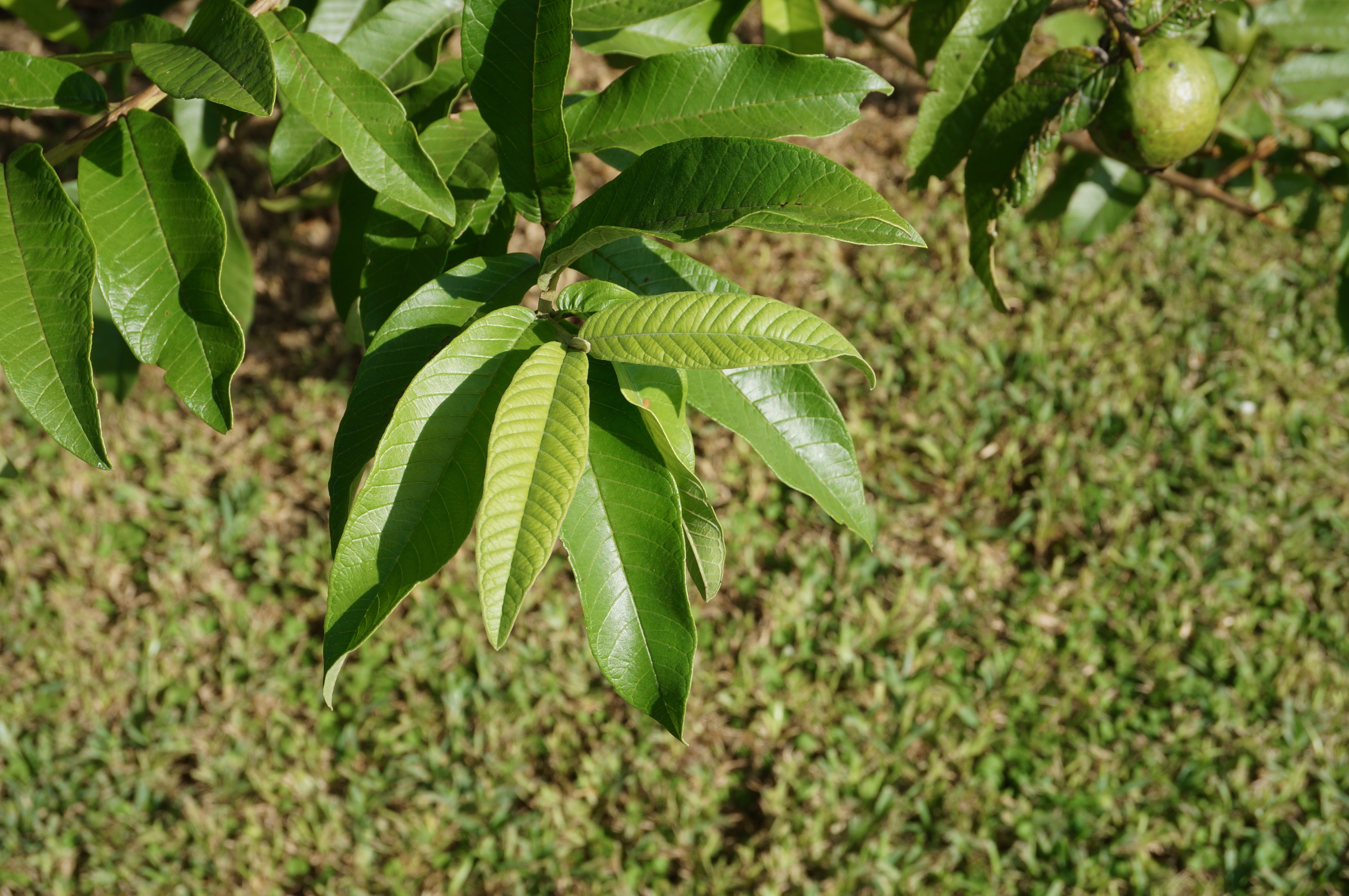
Pests
Guavas can be effected by many different pests, so many that it would be an extensive list. It is effected by numerous different insects, fungi, and animals depending on where you live. Our guavas are probably the only fruit tree we currently have where the fruit is severely effected by a pest, and that pest is a fruit fly. Many different fruit fly species infest guavas with their larvae, but the most prominent one in my area of South Florida is the Caribbean fruit fly. We constantly find the larvae in our guavas, and the guavas are sometimes completely unusable. I am not 100% certain that it is the Caribbean fruit fly larvae but, considering that the species is a major pest of the guava in South Florida, I am pretty confident it is.
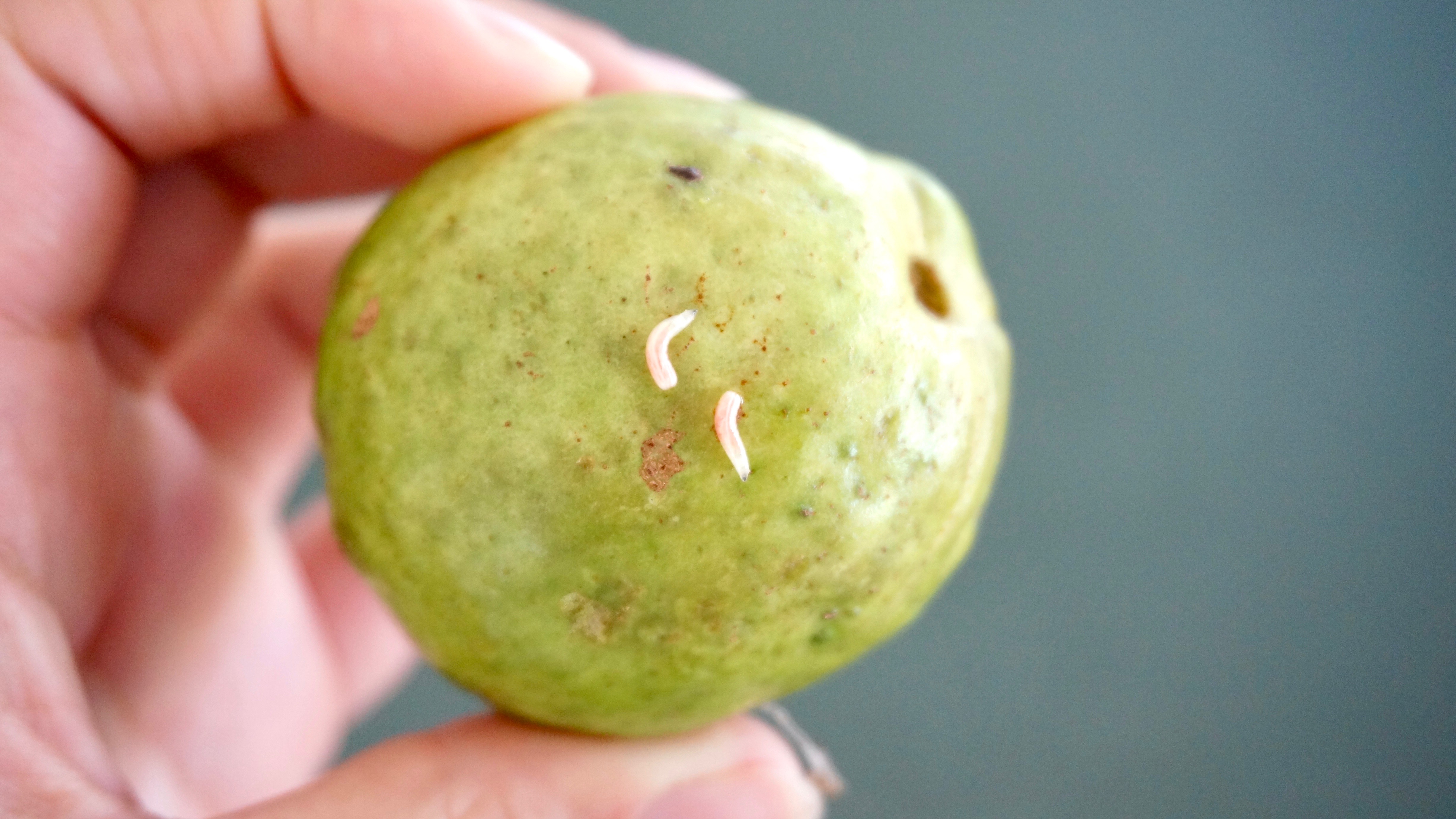
The Fruit Fly
The fruit fly poses as a major pest for South Florida guava growers. When driving past guava orchards in my area it is not uncommon to see all the trees covered with white baggies. These bags are used to cover the fruit to prevent infestations. The flies, supposedly, only lay eggs in mature fruit; so we harvest our fruit when they are still green. Unfortunately, we still find a significant amount of larvae. We have been avoiding bagging the fruit because it is a very tedious task, since the tree produces a lot. Other solutions might be spraying the fruit with something that keeps the flies away, and/or surrounding the trees with a variety of herbs in order to mask the guava aroma. When our tree first started producing we never found any larvae until after a few years. This past winter, after a severely effected summer crop, we had a few colder nights and found no larvae in our winter guava crop. That is good news for any of you growing guavas a little further up north in Florida. Perhaps colder winters reduce population numbers making it an unimportant pest. I have also heard that picking guavas underripe, and soaking them in water will prevent the larvae from hatching; so that might be worth a try. Watch the video down below to see how I handle guavas with fruit fly larvae.
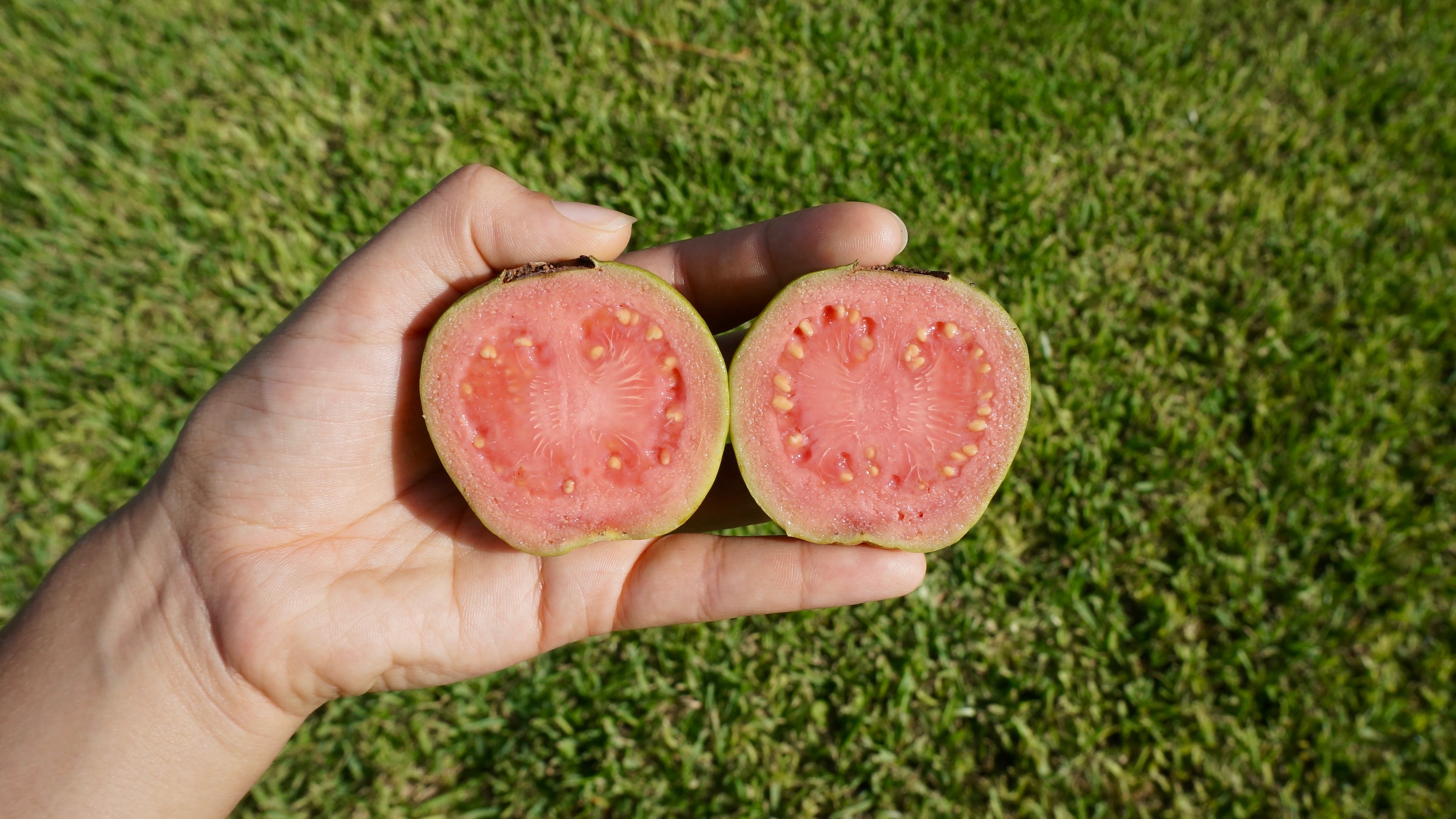
Uses
The guava has a very distinct flavor that is appreciated by many. That is why it is often made into juices, ice cream, and preserves. The entire guava with seeds and skin can be eaten fresh, however, some do not enjoy it because the seeds are very hard. We mainly make guava juice with the fruit by blending them with water and then straining it to remove the seeds. In Cuba the guavas are used to make guava shells known as “cascos de guayaba.” To do this the fruit are peeled, cut in half, and the center pulp is scooped out. Then the flesh is cooked with water and sugar. The center pulp can be blended with water, strained to remove the seeds, and added back to the guava shells. The most popular way the fruit is consumed is in guava pastries knows as “pastelitos de guayaba.”
Have you ever eaten this fruit? Do you have your own guava tree? Do you have any pest issues with your tree? Let me know down below in the comments. Want to learn more about other fruit trees? Click here. If you like this post be sure to subscribe, so you don’t miss out on another one!
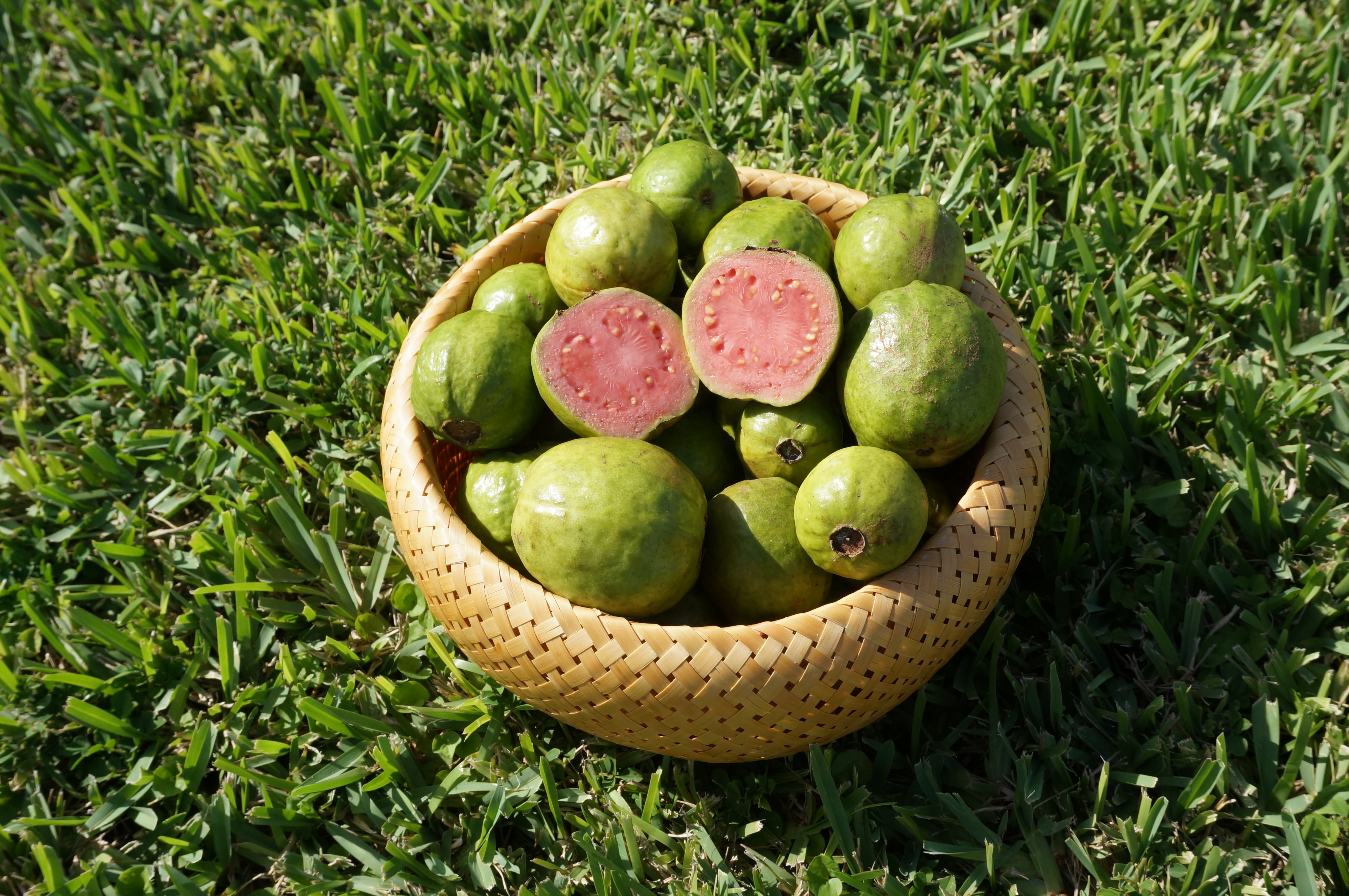
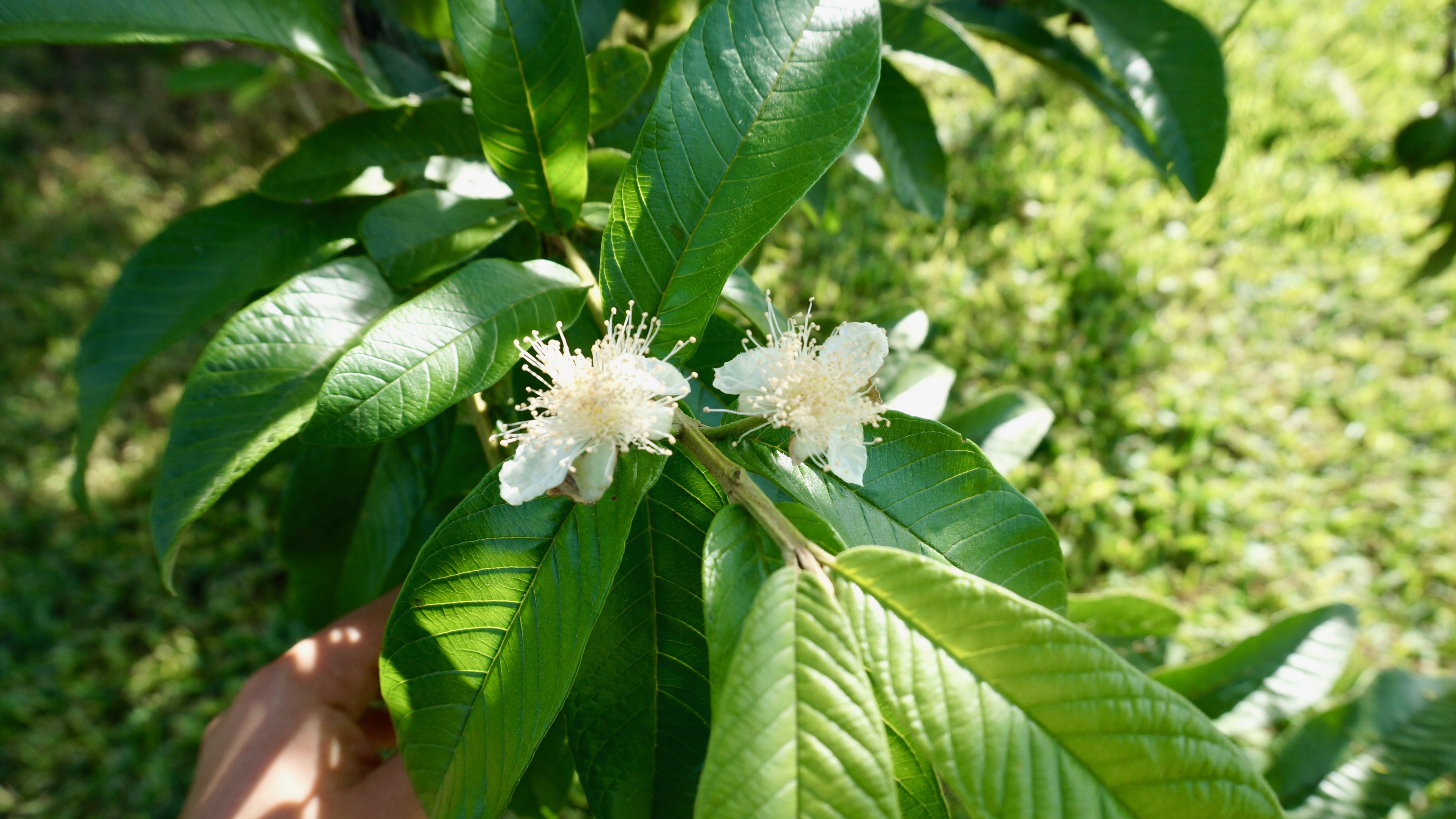
Hi Melanie, I am interested in pink guava that have worms for some studies here in Homestead. I want to see if using cold treatment will kill the worms. I saw your video on youtube and it led me here. Would you have some fruit that I can use for my study?
Hi. There's any way that I can get pink flesh guavas , from you guys?..!!!
Hello. Email me to talk more about it. My email is ourtropicalsoil@gmail.com
I love guavas! Especially the really fragrant varieties. This post makes me appreciate at least one positive aspect of our frost-prone climate up here in North Florida: no tropical fruit flies. Unfortunately those same winter frosts limit our ability to grow delicious tropical fruits like guava. Josh Jamison found a population of feral guavas in Brooksville that appear to have some frost resistance. I'm growing out a group of seedlings from that population, and I'll see how well they handle our winters.
Just curious, when is guva season in South Florida? Is it just one season, or is it spread out?
I am not sure, but I think guavas are one of the tropical fruit trees that handle the cold a bit better then the others. That is pretty cool that you found some guavas growing wild. I hope they do well and the fruit tastes great! We have two guava seasons here. So right now it is producing and this crop is mostly effected by the fruit flies. After this crop there is usually like a month or two of a break and then it produces again. The second crop doesn't have as much fruit flies. I am not exactly sure when it is but it is after we get some cold weather. The season extends for a long while because it has flowers, young fruit, and mature fruit all at the same time. Sometimes we will not harvest any 2 or 3 weeks and then the last few ripen up.